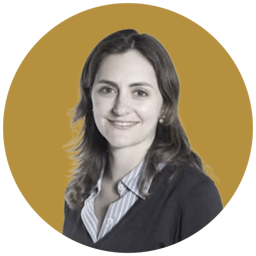Balancing Trends With Timelessness
This article is from the archive of The New York Sun before the launch of its new website in 2022. The Sun has neither altered nor updated such articles but will seek to correct any errors, mis-categorizations or other problems introduced during transfer.

It wasn’t all that long ago that spending extra money on material goods — shoes, a handbag, a fur, a watch — carried some notion of permanence. These were items that you would wear for decades, and, in some cases, pass on to your children.
But such notions of investing in one’s material future have come to seem hopelessly old-fashioned. Fashion cycles are rocketing forward so fast that a year from now, today’s “it” bag will be collecting dust. The shape and color of fur coats change radically from one season to the next. Even men’s shoes can shift their shape, leaving the classicist behind the times.
In contrast to this is the philosophy of Hermès, the 170-year-old luxury goods purveyor, which opened a new store in the financial district on Thursday. “At some point, people feel that that cycle is spinning too quickly. And then you just want that one moment of peace and quiet and timelessness,” the president and CEO of Hermès U.S.A., Robert B. Chavez, said.
The Wall Street Hermès — the second in New York — is part of a major expansion plan for America, lead by Mr. Chavez. What he’s counting on is Hermès offering an antidote to trendiness. As the company’s executive vice president for international affairs, Christian Blanckaert, said:”We are not in the rushing business. We are not in the throw-away luxury business.”
Mr. Chavez wants to connect with the customer who thinks, as he puts it: “I know I will have this for the rest of my life. It’s not going to be out of fashion next season.”
Whether that’s a $7,000 Kelly bag (the waiting list for which is about two to three years, depending on the skin) or a $400 limited-edition silk scarf, the market is ripe for goods that are steadfastly chic. “In today’s fast-moving world, people are developing more and more of an appreciation for that,” he said.
In the next three years, Mr. Chavez will plant the orange flag of Hermès in cities where the brand has no presence now, including Denver, Seattle, and San Diego. “All of these places hold tremendous potential for us. But, typical of Hermès, we’re doing it the right way. Very slow, very strategic. We’re in no rush to do it.”
Whereas Hermès is fully deployed throughout Europe and Asia, the brand has less of a presence on these shores. The market is “underpenetrated,” according to Mr. Chavez. “We’re 170 years old, but we’re really very young in the U.S. market. Generally, when you mention Hermès to people who are not very familiar with it, they say silk and leather,” he said.
His job is to make Americans aware of the full range that Hermès offers, from baby gifts to home accessories to beach towels. According to Mr. Blanckaert, the strongest category in the broader luxury market is bags and accessories. But for Hermès in America, the best opportunities for growth are in menswear and home accessories, mainly because the customer base still perceives Hermès as mainly a purveyor of ties, scarves, and leather goods.
The new location, at 15 Broad St., is a large part of the process of introducing the brand to a wider market. At the soft opening, Mr. Chavez watched “the sheer amount of people who walked by and then walk in, asking for the scarf booklet, the tie booklet.”
The decision to expand downtown took some time. “There was a time when SoHo became the spot that a lot of companies were focusing on. Somehow that just didn’t feel right for us,” he said. “We started to keep an eye on downtown. We thought it would be really right for Hermès to become a part of the revitalization. And we wanted to be at the forefront.”
The appeal of the neighborhood, as opposed to SoHo, was threefold. “There is a tremendous amount of people who come to the financial district to work everyday. Then there is a lot of tourist traffic here,” he said. “The third and most convincing factor was when we heard about the conversion of the old office towers into luxury condominiums and co-ops.”
It’s a shopping trifecta that Hermès will be getting to before the arrival of other luxury brands, such as Thomas Pink and Tiffany, which are both opening outposts this year. “A lot of people who would never have thought about it or would never have gone up to 62nd Street and Madison Avenue,” Mr. Chavez said, referring to the uptown Hermès store.
Is there any concern that the venerable name will become overexposed? Given the size of the American market, that would take some time. “The U.S. is 15% of our business. That can be more,” Mr. Blanckaert said.
The way forward is with the signature combination of style and quality. Though the brand regularly introduces new products and new collections, the essence of the company is in its attention to the long view. Why have the Kelly and Birkin bags remained chic for so long? “The quality is perfect. They can live forever,” Mr. Blanckaert said.
And if there is a secret to the brand’s long-lived success, it is in the sense of staying calm while others are clamoring: “We are fashionable in the sense that our products are never out of fashion.”

